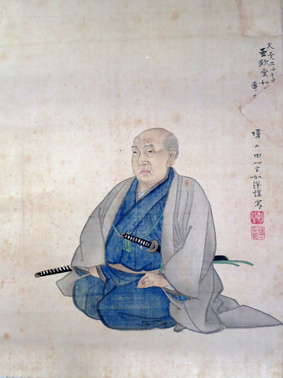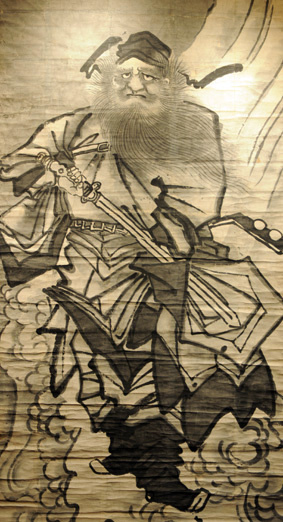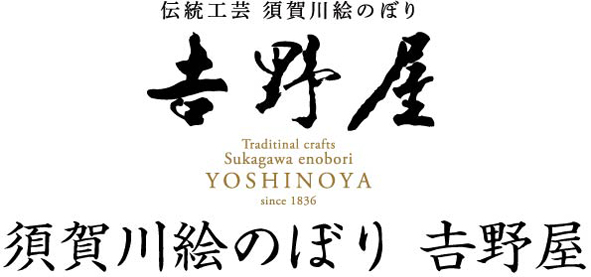今から280年程前、洋画・銅版画家の亜欧堂田善(あおうどうでんぜん、以下「田善」という)は、江戸時代中期の大名である白河藩主松平定信の御用絵師として全国にその名を知られていました。田善は、当時の岩代国(現在の福島県須賀川市)の出身であり、晩年に町絵師として故郷に戻りました。そして、和紙や布地に描かれた田善の様々な絵の中でとりわけ注目された作品が、布地に描かれた中国唐の守り神「鍾馗(しょうき)」でした。それが五月の端午の節句の際に庭先に飾られ、やがてお祝いの装飾品として男子の健やかな成長を願うためののぼり旗となったのが、須賀川絵のぼりのはじまりです。
須賀川絵のぼりは約6メートルの縦長の天竺木綿に顔料で描くもので、田善から弟子の田騏(でんき)、そして吉野屋初代 大野松岳(しょうがく)へと継承されました。次第に須賀川市の名物となり、現在も端午の節句のお祝いとして男の子供を持つ家々で絵のぼりが立てられています。
The Beginning of Sukagawa Enobori
About 280 years ago during the Edo period, a Western painting/copperplate engraving artist named Denzen Aeudoo was known nationwide as a painter for Sadanobu Matsudaira, a ruler of Shirakawa Domain. He returned to his hometown in Sukagawa, Fukushima in his last years and did various paintings on Japanese traditional papers and clothes for the local people. One of his paintings was an image of a Chinese guardian “Shoki” and the painted cloth was used as a decorative festive flag in the garden during the boys’ festival. It was celebrated in order to wish the healthy growth of the boys in the family. This was the beginning of Sukagawa Enobori. They were painted with pigmented ink on about six meter cloths. Denki, a student of Denzen learnt the painting technique from his master, Denzen and this was then passed on to Shogaku Ohno who became the founder of Yoshinoya. Eventually, Enobori became known as a famous product in Sukagawa, and today, people still decorate Enobori paintings during the boys’ festival.

亜欧堂田善:1748年(寛延元年)須賀川生まれの洋画・銅版画家。白河藩主松平定信の御用絵師として扶持を得て、長崎・江戸で銅版画技術を習得。和紙や布地に鍾馗(しょうき)を描き、庭先に立てたのが須賀川絵のぼりの始まり。(資料協力:石井敬三様)
Denzen Aeudoo (born in Sukagawa, Fukushima, in 1748): Denzen was a Western painting/copperplate engraving artist. He was known nationwide as a painter for Matsudaira Sadanobu, a ruler of Shirakawa Domain and learnt about the copperplate engraving technique in Nagasaki and Edo. He painted an image of a Chinese guardian “Shoki” on a cloth and it was used as a decorative festive flag during boys’ festival. This was the beginning of Sukagawa Enobori. (Photo credit: Keizo Ishii)

